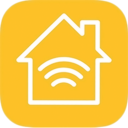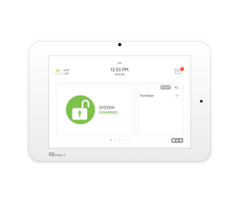If you're using a newer wireless security system, then you will definitely want to explore the encrypted sensor options that we offer! Encrypted sensors are virtually impossible to hack, and they can make your security system even more secure. There are many great options available.

As you know, a home security system or a business security system is an investment you make for the protection of yourself, your property, and those around you. A proper system should also give you peace of mind and make you feel safe. It doesn't do you any good if an intruder manages to defeat your system. But with encrypted sensors, that is extremely unlikely to ever happen.
If you aren't familiar with encryption, it refers to techniques for encoding data and signals so that only authorized individuals and/or equipment are able to access the information. When it comes to wireless alarm systems, encrypted sensors send protected signals that can only be accessed, received, and interpreted by the authorized panel.
When wireless systems first rose to prominence, they rarely, if ever, used encryption. This made many people wary of wireless security panels, and they felt more secure using wired ones. The lack of encryption wasn't seen as a fatal flaw, as an intruder would have to be extremely savvy and really know what they're doing to defeat even a non-encrypted sensor. To this day, many people feel totally comfortable and safe using non-encrypted equipment. Remember, most intruders don't have the knowledge to beat wireless sensors, even if they aren't using encryption.
But there are the rare, professional criminals who do take the time to extensively study security equipment, and they develop techniques for beating non-encrypted devices. This is very uncommon, but it's not unheard of. And if you aren't using encrypted sensors, then you are leaving yourself open to this small risk. Whether or not that means outfitting your system with all-new encrypted sensors, or even upgrading to a different system that is capable of supporting encrypted sensors is up to you. We just want to make you aware of your options.
Today, we're going to briefly look at some popular wireless systems and explore their encrypted sensor options, as well as their non-encrypted sensor lineups. This will help you learn more about your system, or one you are considering for purchase.
Honeywell Lyric Controller

The Lyric represents the first the first encrypted panel from Resideo, formerly known as Honeywell. The system has its very own lineup of encrypted sensors called the Honeywell SiX Series Sensors. The lineup is a bit limited, as its lacking options like an outdoor door and window sensor and a curtain motion sensor. But the good news is that these sensors are extremely secure with their military grade 128-bit AES encryption.
You can supplement your SiX Series Sensors on your Lyric System with devices from the Honeywell 5800 Series. These sensors are not encrypted, but the lineup offers more diverse selection than the SiX Series lineup. You could consider using encrypted sensors for the most vulnerable parts of your home or office, while using non-encrypted 5800 Series devices for areas where it isn't as important. The non-encrypted 2GIG 345 MHz Sensors are also compatible with the Lyric once the system is on Firmware Version MR3 or higher.
Qolsys IQ Panel 2 Plus

There are some outstanding encryption options available for the Qolsys IQ Panel 2 Plus, regardless of which version you have. Any IQ Panel 2 Plus System can readily support DSC PowerG Sensors. Not only do these sensors have an outstanding wireless range of up to 2,000 feet away from the IQ Panel 2 Plus, they also utilize military grade 128-bit AES encryption and Frequency Hopping Spread Spectrum (FHSS) technology.
And if you have the 319.5 MHz Version of the Qolsys IQ Panel 2 Plus, then you can also pair Qolsys S-Line Sensors, which use rolling code encryption. This rolling code encryption isn't quite as secure as the encryption used by PowerG Sensors, but it still does a good job of keeping your system protected. The S-Line Sensors will also utilize encryption when paired with the original Qolsys IQ Panel 2. The original IQ Panel 2 cannot use PowerG Sensors.
In terms of non-encrypted options, each IQ Panel 2 Plus can support one of three (3) non-encrypted radio frequency signals. The available options are 319.5 MHz, 345 MHz, and 433 MHz, and it is dependent upon which version of the IQ Panel 2 Plus you buy. Again, it is certainly possible to mix encrypted sensors with non-encrypted sensors on the same system. But with the diversity and selection of the PowerG lineup, you probably won't need to look outside too much.
2GIG GC3e

The big highlight when the 2GIG GC3e was introduced was its ability to support encrypted sensors. While it took a little while before its encrypted sensor lineup became available, we were very pleased with the result. The 2GIG eSeries Sensors use highly secure encryption to keep your system protected. It also seems that 2GIG is regularly expanding upon this lineup, as we have been seeing new eSeries Sensors hit the market it recent times. All of the 2GIG eSeries Sensors are compatible with the GC3e, as well as its little brother, the GC2e.
With the GC3e, you also get access to the Honeywell 5800 Sensors and the 2GIG 345 MHz lineup. Just like with the Lyric, there is a bit more of a diverse selection of non-encrypted sensors available for the 2GIG GC3e. You can definitely set up a mixture of encrypted and non-encrypted sensors to meet the needs of your business. But with new 2GIG eSeries offerings continuing to become available, you shouldn't have much trouble building a fully encrypted 2GIG Security System.

If you are looking to set up an encrypted security system, then Alarm Grid is here to help! We can let you know if your existing system has any encrypted sensor options available. We can also help you determine if you are currently using encrypted devices or if your existing sensors are non-encrypted. Many users have trouble determining. Either way, we'll help you make an informed decision so that you can get the most out of your monitoring service. If you want to reach us, please email support@alarmgrid.com. We check our email from 9am to 8pm ET M-F. We look forward to hearing from you!

















